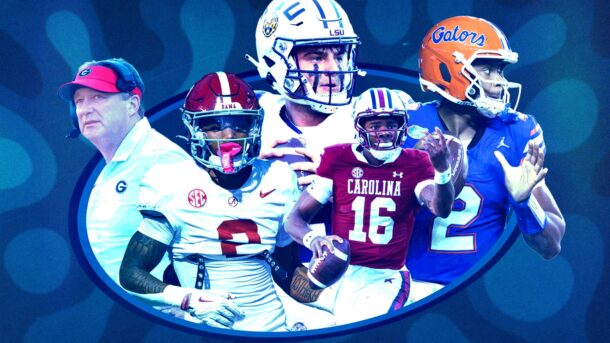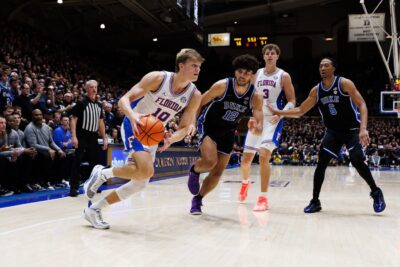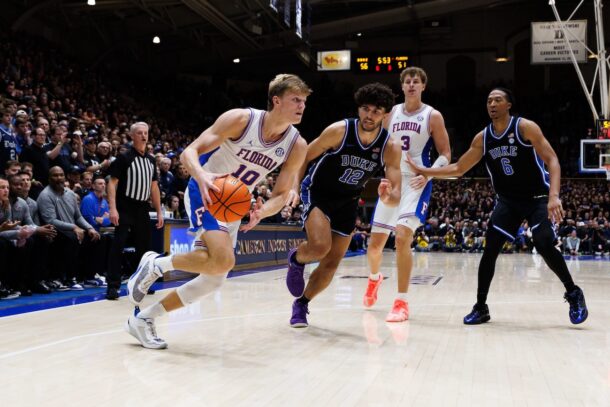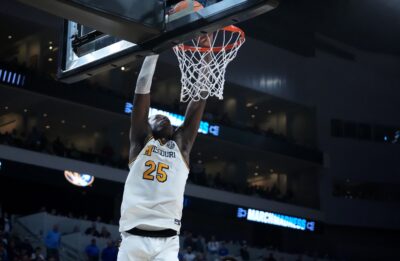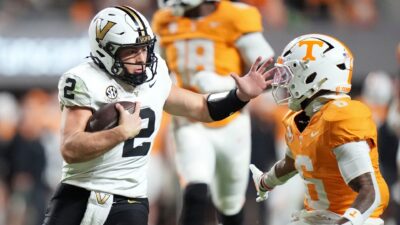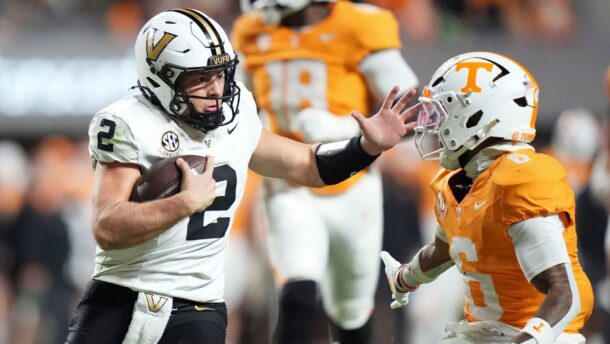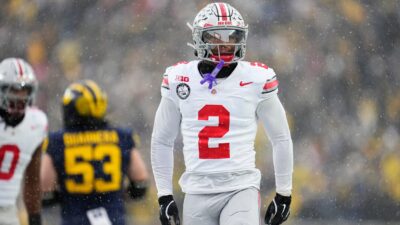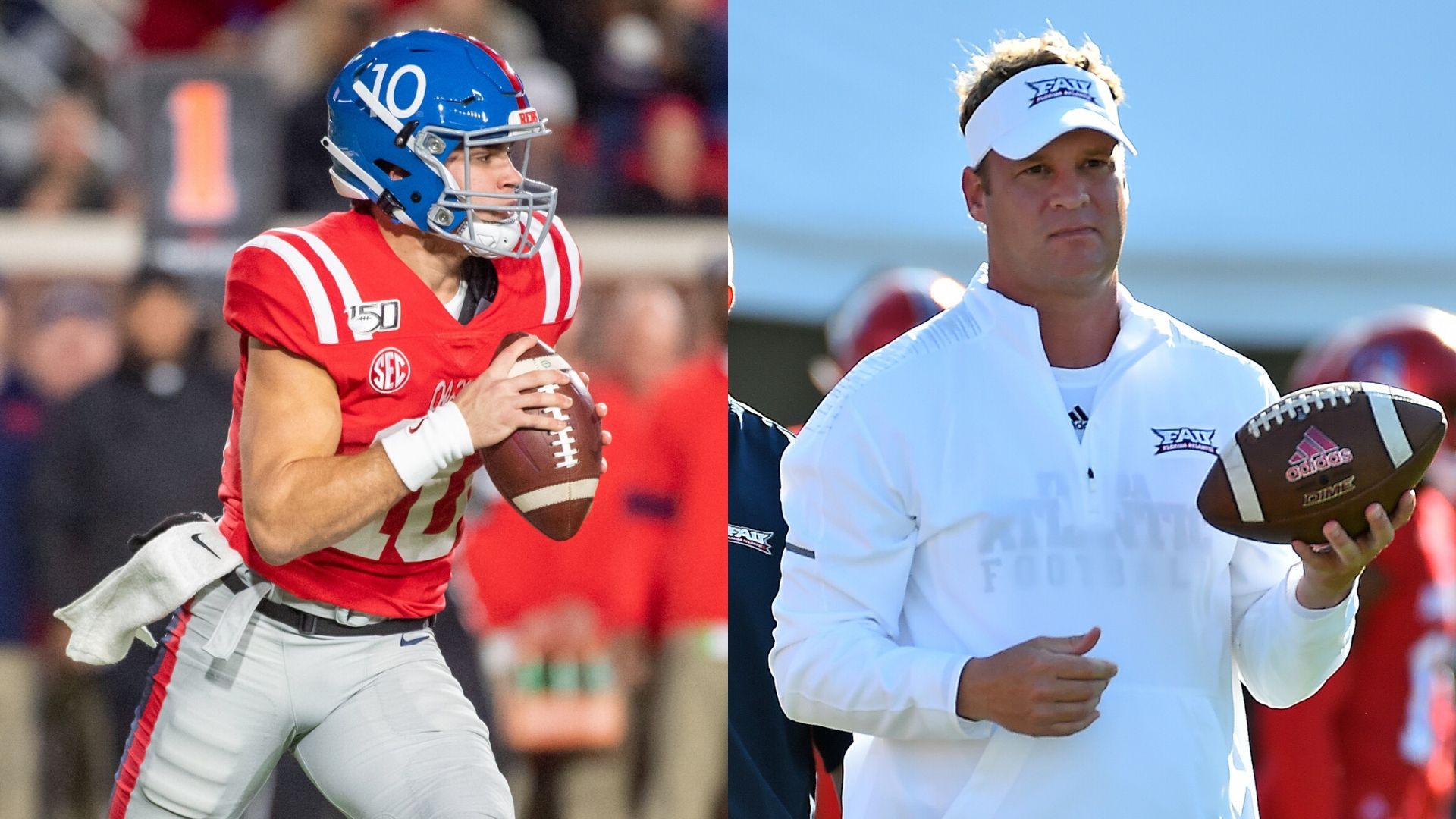
How atypical of a starting QB would John Rhys Plumlee be for Lane Kiffin’s offense? And will that matter?
What does a typical Lane Kiffin quarterback look like?
It’s not an easy question to answer. The accomplishment Kiffin is most proud of during his rebuilding time — starting when he became Alabama’s offensive coordinator through his time as Florida Atlantic’s head coach — is that he won 5 conference championships with 5 different starting quarterbacks (Blake Sims, Jake Coker, Jalen Hurts, Jason Driskel and Chris Robison).
I suppose the only way to answer that question is to say that there is no typical Kiffin quarterback. There are some things that they have to do, though. They have to be comfortable operating the spread, run-pass option system. These days, the majority of quarterbacks do that in high school.
Kiffin is not Rich Rodriguez, who for most of his career made sure he had a run-first quarterback operating his offense (go ask Ryan Mallett about that). That’s why Rodriguez and John Rhys Plumlee were an ideal marriage. What we saw from the Ole Miss signal-caller last year — he eclipsed the 1,000-yard mark on the ground — was why some (myself included) thought he should’ve been named SEC Freshman of the Year.
A year ago, it felt like the top question in Oxford was how pro-style quarterback Matt Corral was going to fit into Rodriguez’s run-heavy offense. A year later, the top question in Oxford is how Plumlee is going to fit in Kiffin’s offense.
Well, it’s really a combination of Kiffin and new offensive coordinator Jeff Lebby, who joined Ole Miss’ staff after 2 years as the OC of UCF’s high-powered offense. Lebby will be Kiffin’s third offensive coordinator in his last 4 seasons as a head coach. The other two, Kendal Briles and Charlie Weis Jr., both shared the same philosophical beliefs about having a dual-threat quarterback who can run a relatively balanced offense.
What Kiffin probably doesn’t get enough credit for is looking at the quarterback talent in the room and maximizing it. Or rather, adapting to it. He did impressive things in the passing game with Blake Sims (who was a tailback at one point), he went out and won a national championship with fifth-year senior Jake Coker and then tweaked his offense to fit the skill set of true freshman Jalen Hurts.
At the root of all 3 of those different signal-callers was the ability to force defenses to respect the quarterback run (Coker wasn’t Hurts but he made more plays with his legs than you probably realize). That, as we know, isn’t the issue for Plumlee. His goal is to make defenses not load the box.
It’s interesting to go back and look at how Kiffin’s much starting quarterbacks ran the ball. Since he arrived at Alabama — where he admitted he changed and was actually willing to tweak his schemes with new wrinkles unlike what he did at USC — Hurts is the only one who really had atypical rushing numbers:
[table “” not found /]A couple things should stand out when looking at that. Hurts’ running was more the exception than the rule. The 5 other seasons had Kiffin’s starting quarterback all finish between 73-84 rushing attempts. Again, Kiffin isn’t RichRod.
The other notable thing there is that in the 5 non-Hurts seasons, Kiffin’s quarterbacks all threw the ball at least 3 times as much as they kept it (that number is actually even more skewed because sacks taken count for rushes). But all of those quarterbacks — even Coker — still had to run the ball a bit. They were willing. They were able. Some of that was on designed looks, and other times it was creating something when a play broke down (Coker was better than you remember at that, too).
That brings us to 2020 — is Plumlee about to get the Hurts treatment? And if he does, what will that look like?
I do believe, based on how Kiffin usually adapts to his quarterbacks, that Plumlee is going to get the first crack over Corral because of his ability to take over a game. If Kiffin wasn’t impressed by what he inherited, I tend to think he would’ve hit the grad transfer market. He doesn’t turn to that much to begin with, but the silence on that front suggests Plumlee will be the guy even as other Ole Miss quarterbacks rotate with the first-teamers in spring while he plays on the Rebels’ baseball team.
Kiffin likes balance, but it’d be stunning to see Plumlee finish 2020 with nearly a 50-50 pass-run split like he had as a true freshman (he had 154 rushes compared to 150 passes). He’s clearly more developed as a runner than a passer. If Plumlee isn’t Kiffin’s quarterback down the road, it’ll be because he couldn’t fix his accuracy issues (all of those aforementioned Kiffin quarterbacks completed at least 62% of their passes). That can certainly happen.
But what I think is more likely is that Plumlee matures as a passer and he has close to a 2-to-1 pass-to-run ratio. That’s exactly what Hurts finished with in 2016 when Kiffin fueled an SEC Offensive Player of the Year honor.
Increased pass attempts might sound daunting after some of the struggles that Plumlee had throwing the ball, but he should have plenty of help. Ole Miss returns every wide receiver who caught a pass last year, including Elijah Moore, who had the fourth-most yards of any returning SEC wideout. He’s one of 3 former 4-star receivers who Kiffin will get to scheme for.
That doesn’t include the electrifying Jerrion Ealy, who was second on the team in receptions and racked up 894 scrimmage yards on just 124 touches as a true freshman. Like Plumlee, he’ll also have a late start on learning Kiffin’s offense because of baseball. Whether the former 5-star recruit gets used like Derrick Henry or Devin Singletary remains to be seen. Either way, it’s worth remembering that despite all the work those guys got in Kiffin’s offense, their teams still threw the ball north of 350 times in each of those seasons. That was the case in all 6 of Kiffin’s Alabama/FAU seasons.
Tempo is the name of the game. That’s the link between Plumlee and Kiffin. When they’re at their best, they’re gashing defenses in the fourth quarter. Plumlee gives Ole Miss its best chance to run an up-tempo offense than can wear down the elite defenses that they’ll see in 2020.
Will it be a perfect fit? Probably not unless Plumlee starts fitting throws into tight windows with ease. Based on what we saw last year, I wouldn’t expect a drastic change in that department. But those throwing windows should open up a bit, and dare I say, there could be even more running lanes for Plumlee.
Plenty of signs point to the Plumlee-Kiffin relationship yielding prolific results in 2020. Perhaps a big year from Plumlee would show that the answer to that question about what a typical Kiffin quarterback looks like is actually pretty simple.
A Kiffin quarterback makes things happen one way or another, and Plumlee has what it takes to do just that.
Connor O'Gara is the senior national columnist for Saturday Down South. He's a member of the Football Writers Association of America. After spending his entire life living in B1G country, he moved to the South in 2015.
